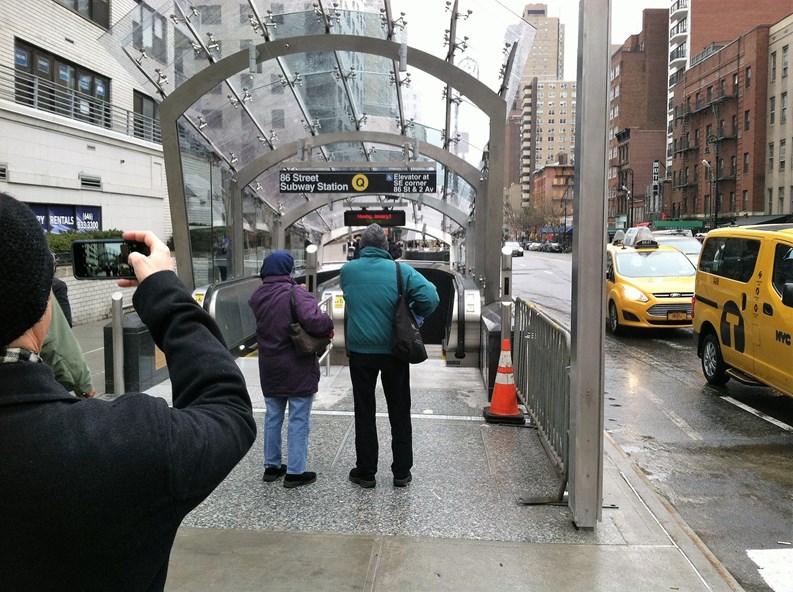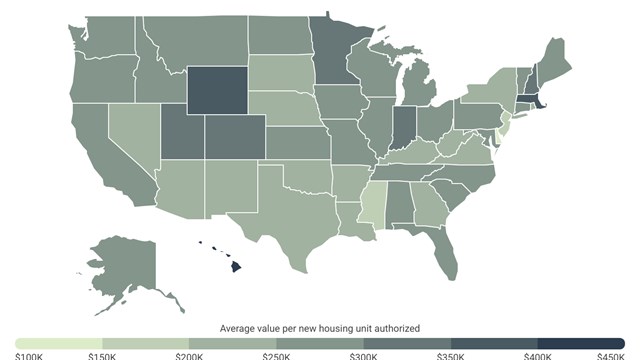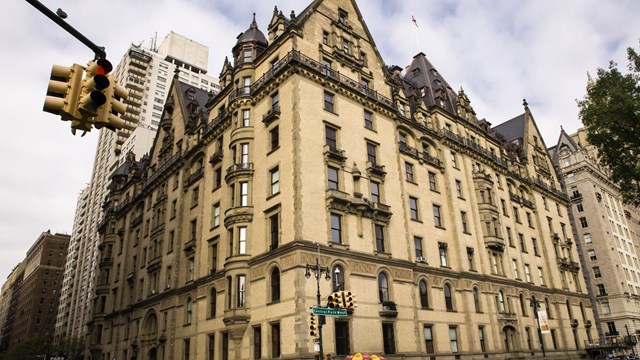In movie industry parlance, New York City’s Second Avenue subway line was in ‘development hell’ for almost 100 years—as many Upper East Siders who ride the very crowded Lexington Avenue lines daily know first-hand. Plans for a new line were first proposed in 1929, but were interrupted by the country’s involvement in World War II. It wasn’t until the 1970s that federal funding arrived to build the line...only to be halted again due to the city’s fiscal crisis. After nearly three decades, ground finally broke at the 96th Street station in 2007 following the passage of the state’s Transportation Bond Act two years earlier.
Now what seemed like only a distant dream has become reality as the first phase of the Second Avenue line went into operation on January 1. Phase one—estimated by the New York Times to have cost a cool $4.4 billion—consists of the Q train running past 57th Street-Seventh Avenue through 96 Street-Second Avenue—with new subway stations 72nd Street, 86th Street and 96th Street dotted along Second Avenue, as well as a renovated Lexington Avenue/63rd Street station. According to the Metropolitan Transit Authority, the first phase of the line is expected to carry 200,000 riders daily; alleviate crowding on the current Lexington Avenue line by 13 percent, or 23,500 riders on an average weekday; and reduce travel time for Upper East Side riders by 10 minutes or more. The next phase of the project will include stations in Spanish Harlem, East Midtown, the East Village, the Lower East Side, Chinatown and Lower Manhattan.
New Developments in the Neighborhood
But it’s not only residents and commuters of the East Side who are celebrating the Second Avenue line -- New York’s real estate market stands to benefit from this latest addition to the city’s mass transit system as well. Prior to the subway opening, the area has been teeming with development. According to Halstead Property Development Marketing and the New York Post, there are almost two dozen new projects under construction from 59th Street to 96th Street. Among the projects that are happening in the vicinity of the Second Avenue subway include luxury condo Citizen 360 at 360 East 89th Street; the Charles, a condo tower on 1355 First Avenue; the Kent at 200 East 95th Street; and rental-to- condo conversion Carnegie Park at 200 East 94th Street.
“I’ve seen what’s been going on, both good and bad,” says Beth Benalloul, a broker for the Corcoran Group and a resident of Second Avenue. “Already you’re seeing so much new development in the area, and I think even more slated to come, knowing that the transportation options are going to open up on Second Avenue. I think that’s been a big deterrent for purchasers and for renters, because the transportation option was limiting.”
Joel Burris, executive director of real estate firm Brown Harris Stevens and president of the Ruppert Yorkville Towers condo on Third Avenue, also sees the benefit of the new line. “I think most Upper East Side residents as well as people who work there are very excited. It will alleviate crowding on the Lexington Avenue line between 96th Street and 59th Street, which is always an incredibly crowded station in the mornings...I think it will make people who live on East End and 1st Avenue and York as well as Second and even Third Avenues have an option on how to get to work.” However, Burris offers a somewhat different point of view on whether the lack of easy transit access has given apartment seekers pause when considering the UES. “I think that people were used to the thought of having to commute over to Lexington Avenue,” he says. “I didn’t hear people say they wouldn’t live on Third Avenue or Second Avenue because it was too hard to get to the subway.”
The New Subway and the Residential Market
According to the recent 3Q 2016 report by the Corcoran Group, there were 742 closed sales on the East Side, a decrease of 16 percent from the year before. The median price for co-op resales in that quarter was $870,000, a six-percent decline from 3Q 2015. Meanwhile, the average price for co-op resales was $1.550M, an uptick of two percent from the previous year. For condo resales, the median price was $1.529M, an increase of 30 percent from 3Q 2015, while the average price was $2.019M, a one percent improvement over a year ago.
Benalloul, who represents the Azure condominium complex on East 91st Street and First Avenue, says that there has definitely been interest from buyers who are excited about the new subway line and feel it’s going to be a big coup for the neighborhood. “We only have two penthouse units left now,” she says about the Azure. “We have someone interested now, and one of the reasons they’re interested is because of the subway.”
Prior to the line’s arrival, Benalloul characterizes the condo and co-op market on the East Side as a little bit slower-moving and more discounted than comparable properties that were closer to transportation. “I think the big change will be that you can now say you’re half a block or two blocks away from a subway,” she explains. As far as the Second Avenue line’s effect on prices for properties, Benalloul thinks it will be project specific. “I think you are going to see a rise in prices, and also probably an increase in activity and interest,” she says.
“Do I think that without the Second Avenue subway that the prices would depress?” says Burris. “No, I wouldn’t say that. What I would say though, is that the Second Avenue subway will help prices go up. That’s different than saying that they would depress because of the lack of a subway before. I don’t think consumers looked that as a problem. I do think they will look at this as an amenity.”
According to Burris, prices on the East Side tend to decrease from 5th Avenue toward 1st Avenue, and then pick up again at East End Avenue - largely due to its pre-war buildings with high ceilings and views of the East River and Carl Schurz Park. “You also have to keep in mind that the Upper East Side from Third Avenue to York Avenue is lower in cost per square-foot than other areas of the city, whereas it used to be the Upper East Side was extraordinarily high,” he says. “A lot of young people out of college now are finding that with roommates they are able to afford the Upper East Side, and that includes when you go between 86th and 116th streets...the area has been attracting millennials. I do believe the Second Avenue subway will help this.”
“We’ve seen it in buildings that we manage, and have some interests in,” he continues. “The sales prices have gone up lately, and I think part of that is the expectation of the subway, as well as the fact that other areas of the city have gone up exponentially more than the Upper East Side.”
On the flip side, the arrival of the new line has brought concerns about rising rents and the displacement of longtime residents and businesses, according to a recent New York Times article. “If it was over $200, that would be tough,” UES resident Dina Zingaro told the paper about the prospect of a rent increase in her apartment. “We’d have to consider moving.”
The Impact of Subway Construction
The construction of the Second Avenue subway itself was as much an inconvenience for residents and businesses as not having the line for so many years was for potential home buyers and renters. “It was very difficult to sell,” Benalloul recalls about the period. “It was difficult for people to see value, especially when I would say to them, ‘Well, in five years, you’re going to have a subway here.’ I think that was a big drawback.”
Burris also agrees about the problems posed by the subway construction in the neighborhood, and that they affected sales. “It was a deterrent,” he says. “You couldn’t get to the front door of several buildings. There’s a building on 91st and Second Avenue that you just couldn’t get into. To drop off a package was impossible...This is going to be a great relief to the residents, not only for the residents of the building, but those people visiting them. It was hard for several years—traffic was a nightmare, getting deliveries, visiting people was a nightmare...it was a detriment and certainly there were people that said to me over the years ‘I wouldn’t live on Second Avenue now.’”
What’s Next?
While both Benalloul and Burris are generally optimistic about the new line’s immediate effect on the East Side, they are cautious of how this will shape up in residential sales in the next several years.
“I do believe that the Second Avenue retail space will become much more valuable because there will be more traffic there,” Burris says. “I’ve always felt the Second Avenue retail space has not yielded the returns that I would have liked for the merchants. [The subway extension] is a good thing for both the merchants and landlords - and hopefully the consumers also, because they will have a different level of store. The question is what about the apartments up above?”
“I would expect that values will go up,” he continues, “There are a couple of really nice buildings that I know of in particular in the 1990s where I felt that the values were much lower than what the buildings would have been, had they been an avenue over, like Third Avenue or certainly on Lexington. I think that they’ll go up, but that’s all speculation.”
“I think it will continue over the next few years to really make a difference,” Benalloul conjectures, “and I think you’ll see the biggest jump in the next five years. It’s sort of hard to predict after that.”
Conjecture - even from seasoned industry pros - isn’t the same as fact, but there’s no denying the buzz surrounding the arrival of the Second Avenue subway—something that most people, including Benalloul, never expected to happen in their lifetimes. “I have three sons,” says Benalloul, “and I was pregnant with one of them when they started the work [about a decade ago], and I’m going to have him ride with me on the subway. He’s almost 10.”
“I am excited that the Second Avenue subway will help bring to life Second and First Avenues,” says Burris, “which didn’t have the vitality that I would have liked them to have had from a real estate perspective. At the same time, I recognize that many of the good schools both public and private are located on the Upper East Side, and therefore the values should always hold up there.”
David Chiu is Associate Editor of The Cooperator.







Leave a Comment